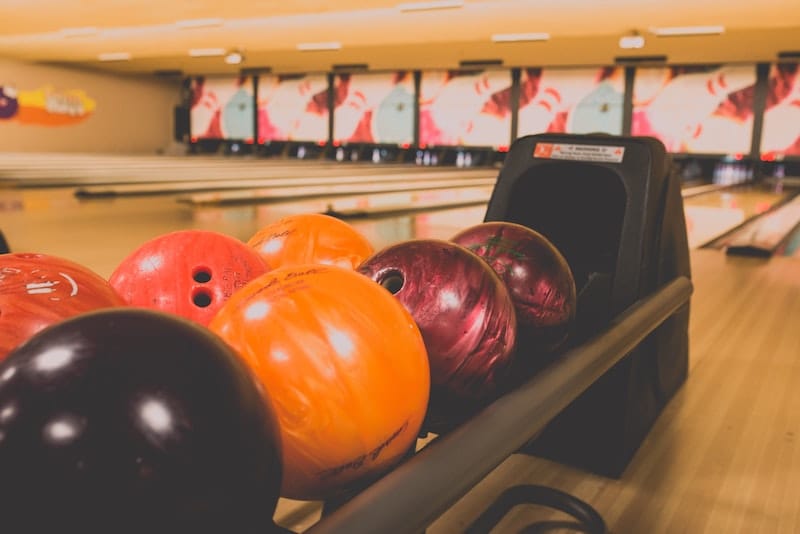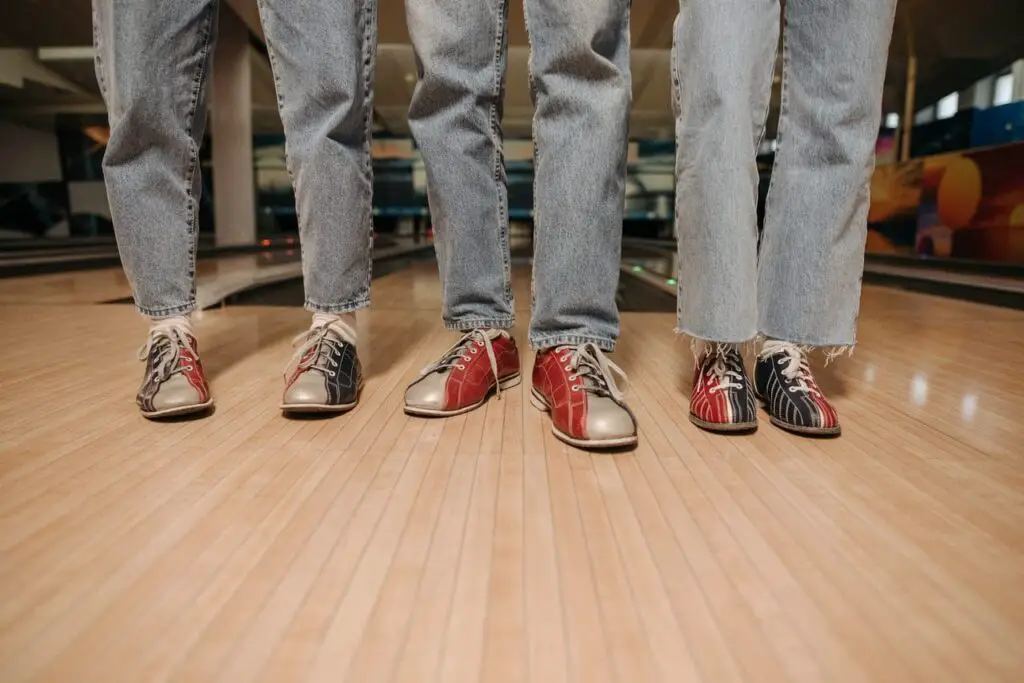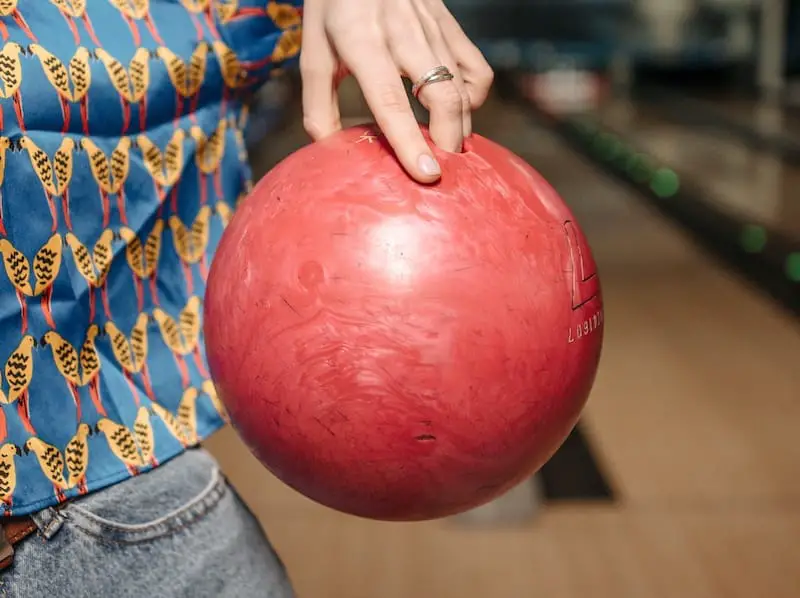The Importance of Cleaning Bowling Ball Finger Holes
As a regular bowler, you know that a bowling ball is more than just a ball. It’s your tool for strikes and spares, and an extension of your arm.
But, did you know that maintaining the cleanliness of your bowling ball’s finger holes is just as important as polishing its surface? Dirt and oil buildup in those finger holes can seriously affect your grip and subsequently, the roll of the ball.
When finger holes are neglected, they can become clogged with dirt or oil residue from your skin or even from the lane. Without proper cleaning, this buildup can cause your grip to slip or stick unpredictably during release.
Inconsistent releases are one of the most common issues that arises when bowlers neglect their equipment’s maintenance needs. In addition to negatively affecting gameplay, neglected finger holes may even lead to physical discomfort such as calluses or blisters on fingers.
The Consequences of Neglecting Finger Holes
Neglecting to clean the finger holes on your bowling ball can also impact its overall performance by reducing its lifespan and making it less effective on different lane conditions. Dirt accumulations in the balls’ pores will cause them to lose their tackiness which is essential for getting a good hook on oily lanes. Sustaining this neglect over time will not only reduce its lifespan but also degrade its performance in terms of friction with different surfaces.
If you’re serious about improving your game and prolonging the life expectancy of your equipment, cleaning finger holes should be an integral part of regular gear maintenance routines. A few minutes spent cleaning after each game could prevent loss of grip control over time and help maintain optimal performance from season to season.
Materials Needed
When it comes to cleaning the finger holes of your bowling ball, having the right materials on hand is crucial. Below are the necessary items that you’ll need to properly clean your ball:
Rubbing Alcohol
Rubbing alcohol is a key ingredient in removing oil and dirt buildup from your bowling ball’s finger holes. You’ll want to use a high percentage of rubbing alcohol, such as 91%, to ensure that it’s strong enough to get deep into the pores of the ball and break up any residue. Also, using a spray bottle will help distribute the rubbing alcohol evenly onto your ball.
Towel
A towel is needed for drying off any excess liquid from cleaning the finger holes. It’s important to use a towel that won’t leave any residue or fibers on your ball, which could negatively affect its performance.
Q-tips
Q-tips are useful tools for getting into those hard-to-reach nooks and crannies of your bowling ball’s finger holes. They can also be used for applying rubbing alcohol directly onto stubborn spots of oil or dirt buildup.
Ball Cleaner (Optional)
Most bowlers will have a specific cleaner for their bowling balls on hand, but this isn’t entirely necessary when cleaning only the finger holes. However, if you do decide to use a specific cleaner make sure it is approved by USBC before using it. Having all these materials on hand before beginning will make cleaning your bowling ball’s finger holes an easier process and help maintain its optimal performance on the lanes.
Steps for Cleaning Finger Holes
Cleaning finger holes on a bowling ball might seem like a daunting task, but with the right materials and technique, it can be done quickly and efficiently. Follow these steps to get your bowling ball ready for the next game:
1. Gather materials – you will need rubbing alcohol, a towel, Q-tips, and a bowl of warm water.
2. Dip a Q-tip in rubbing alcohol and start cleaning the inside of the finger holes.
Be gentle when cleaning to avoid damaging the surface of the ball.
3. Use another Q-tip dipped in warm water to rinse off any excess rubbing alcohol from inside of the finger holes.
4. After rinsing off most of the excess rubbing alcohol, use your towel to dry off each hole thoroughly.
5. To remove stubborn dirt or oil buildup from inside finger holes (especially if it’s been there for some time), try applying some acetone on another clean Q-tip and gently wiping around each hole’s inner circumference. (Can you actually use acetone to clean your bowling ball?)
6. Wipe away any remaining residue with your towel. Repeat this process until all finger holes are clean and dry before storing your ball away or taking it out onto the lanes.
Tips on removing stubborn dirt or oil buildup:
Sometimes dirt or oil can build up in hard-to-reach areas around each hole’s circumference that can’t be removed by just using rubbing alcohol alone. In such cases using acetone can help remove such stuck dirt/oil buildup easily without harming your bowling ball’s surface.
However, make sure that you only use pure acetone (nail polish remover) as other types may contain additives that could damage your bowling ball’s surface. Also, avoid using too much acetone at once as excessive amounts could cause damage over time.
Additionally, always ensure proper ventilation is available when working with acetone since its fumes are hazardous if you inhale it in large amounts. Never mix acetone with other chemicals as this could result in harmful chemical reactions.
Maintenance Tips
Keeping your bowling ball clean is essential to maintaining its performance and longevity. Regular maintenance of your ball can help you avoid issues like oil buildup and dirt accumulation in the finger holes. Here are some tips to keep your finger holes clean and prevent future buildup.
Firstly, make sure to always use a towel or cloth to wipe down your ball after each game. This will remove any excess oil or dirt that may have accumulated on the surface of the ball during play.
Also, try not to touch the surface of the ball with your hands as much as possible, as this can transfer oils from your skin onto the surface of the ball. In addition to wiping down your ball after each use, it’s a good idea to use a specialized bowling ball cleaner at least once a month.
These cleaners are designed specifically for bowling balls and can help remove stubborn buildup that may be difficult to remove with just a towel or cloth. Be sure to follow the instructions carefully when using these cleaners, as some may require you to let them sit on the surface of the ball for several minutes before wiping it off.
How Often Should You Clean Your Ball’s Surface and Finger Holes?
The frequency with which you should clean your bowling ball’s surface and finger holes largely depends on how often you use it. If you’re an avid bowler who bowls several times per week, then you should aim to clean your ball at least once per week. On the other hand, if you only bowl occasionally or just for fun, then cleaning it once per month should suffice.
It’s also important to note that certain factors can affect how often you need to clean your bowling ball. For example, if you bowl in very humid conditions or on particularly oily lanes, then you may need to clean it more frequently than someone who bowls in dryer conditions.
Ultimately, keeping both the surface of your ball and the finger holes clean is important for maintaining the integrity of your equipment. By following these tips and making regular cleaning a part of your routine, you’ll be able to enjoy better performance and longer lifespan from your bowling ball.
Common Mistakes to AvoidMistake #1: Using Harsh Chemicals
One of the most common mistakes people make when cleaning their bowling ball is using harsh chemicals or solvents. Although it may seem like a good idea to use something strong and powerful to remove stubborn dirt or oil, doing so can actually harm both your ball and your health.
Many cleaning products contain chemicals that can damage the surface of your ball, leaving it prone to scratches, cracks, and other forms of wear and tear. Additionally, inhaling these chemicals can cause respiratory problems and other health issues. Mistake #2: Not Drying the Ball Properly
Another common mistake people make when cleaning their bowling ball is not drying it properly after cleaning. While it’s important to clean your ball thoroughly, failing to dry it completely can leave behind moisture that can lead to mold or bacterial growth over time.
This not only affects the performance of your ball but also poses a health risk if you come into contact with the bacteria. Taking care of your bowling ball is vital for optimal performance on the lanes.
Understanding what not to do is just as important as understanding what you should do when cleaning your equipment. Avoiding these common mistakes will ensure that you keep your bowling ball in top condition for years to come.
Final Thoughts
Recap of the Importance of Cleaning Bowling Ball Finger Holes
It cannot be stressed enough how essential it is to clean your bowling ball finger holes. The accumulation of dirt, oil, and grime can negatively impact your game performance by reducing the grip and overall control you have over the ball.
Not only that, but a dirty ball can also damage the lanes, potentially costing you money in lane repair fees. By taking just a few minutes to clean your ball’s surface and finger holes after every game, you’re not only improving your gameplay but also saving yourself from potential headaches down the road.
Encouragement to Take Care of Your Equipment So It Lasts Longer and Performs Better
Taking care of your bowling ball is a crucial part of being a responsible bowler. Whether you’re an amateur or a pro, investing in regular maintenance for your equipment will save you time and money in the long run.
Cleanliness is just one aspect of this equation – other things like proper storage, resurfacing when needed, and regular professional inspections are all important factors as well. Remember: Your equipment is an investment in your hobby or profession – treat it with care and respect!
By doing so, not only will it last longer and perform better on the lanes, but it’ll also make for a more enjoyable experience overall. Don’t let neglecting maintenance ruin what should be a fun pastime or career for you – take the time to maintain your gear properly!


